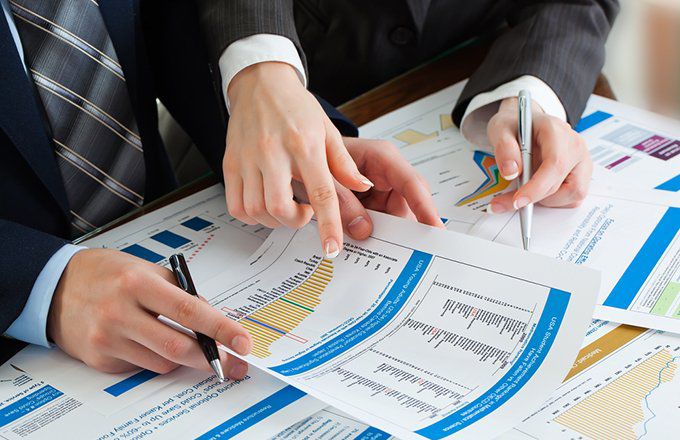I began trading in early 1995, with the intentions of becoming an options trader; my first trading education was through an oex options teaching service. Options training, the service included ‘tape’ reading, trade management AND sp500 index futures trading – also included in the service was the prevalent attitude that paper trading was for ‘sissies’.
Paper trading is widely discussed regarding its merits, and whether it is of value to a trader as they try to make the transition to real money trader. One viewpoint is that since paper trading is not real, the profits are meaningless, and are no indication of real money profitability. An opposite viewpoint would state that paper trading is an important step in the trader’s learning progression, and regardless of whether it is real, if the trader can not ‘properly’ paper trade, then they will not be able to real money trade.
I was a new trader, trying to learn and understand completely new concepts and ideas – what was called a trading method AND I was ‘practicing’ with real money – because paper trading was for ‘sissies’. Losing money and a trading psychology ‘wreck’, both from the losses and thoughts like I was too ‘stupid’ to ever learn how to trade, became a combination which took me out of futures trading, and then unfortunately carried over into my options trading which I had previously been doing well with.
Paper Trading Viewpoints
No, there isn’t any financial risk in paper trading, but I actually haven’t met nearly as many profitable paper traders as one might expect. Even if the issue was only one of financial risk – wouldn’t you want to begin with the confidence of knowing that you were paper trading profitable? It would be hard to imagine a losing paper trading being able to profitably trade real money.
Examples like this, emotions can be added to the paper trading process. What’s the point, and when you consider the underlying implications of ‘needing’ to do this – the issue certainly isn’t about whether paper trading is of value or not, but certainly best to find out before trading real money. You will quickly find out just how emotional paper trading can be – actually a very valuable exercise for the paper trader to do.
The profits aren’t real – how can you not take a ‘base’ method setup when paper trading – isn’t that the point? Would you be in agreement, that if paper trading profits could be viewed in this fashion, that it has the ability to become thus emotional and very real to the trader? I would suggest that this is related to paper trading really not being ‘so easy’, and as mentioned above, self-esteem risk can be very emotional.
Even if this is correct, is it really an issue unless the trader intends to be a scalper, trading for very small profits, and thus each tick is critical? This would be my viewpoint, and in this capacity paper trading fill prices are not an issue.
Paper Trading And Making It Further Beneficial
I have two predominant problems with paper trading, but this is with the trader’s approach, and not with paper trading by definition: (1) the trader does ‘things’ paper trading that they would-could not do with real money (2) the trader views paper trading profitability, instead of paper trading proficiency, as the guideline of whether they are ready to begin trading real money.
I have seen too many paper traders, continuously and knowingly, over trade ‘non-plan’ trades, with trading size that is greater than they could afford the margin for in a real account – let alone accept the risk of loss, while also holding trades for risk amounts that they would not accept with real money. Viewing paper trading as a ‘step’ in the learning progression and transition to real money trading, it is critical that the paper trader only trades exactly what, and how they would trade with real money.
There is a problem with focusing on trading profitability -vs- trading proficiency. This is what I am referring to when I think of trading proficiency. When a trader asks about adding trading size, taking the attitude that if they can make $100 trading 3 contracts, then they can make $1,000 by trading 30 contracts, the first thing I ask them is what is their proficiency ratio – why increase contract size and the corresponding trading risk, if you ‘should’ be able to make more money from smaller size?
What Is Your Viewpoint Regarding Paper Trading?
Clearly, I am on the ‘side’ that believes that paper trading is not only beneficial, but that paper trading is also necessary – however the value received will be dependant upon the trader’s approach and attitude. Needless to say, paper trading as described is something that I have always strongly recommended.
I never thought that I would ever make a dime trading, let alone be able to trade for a living or become involved with trying to teach others to trade – was this simply a function of starting over and paper trading? Granted that is too simplistic, however, I do know that it would have certainly changed the beginnings that I had, while very much shortening my learning curve, and reducing a lot of pain.
I was a new trader, trying to learn and understand completely new concepts and ideas – what was called a trading method AND I was ‘practicing’ with real money – because paper trading was for ‘sissies’. Losing money and a trading psychology ‘wreck’, both from the losses and thoughts like I was too ‘stupid’ to ever learn how to trade, became a combination which took me out of futures trading, and then unfortunately carried over into my options trading which I had previously been doing well with. Viewing paper trading as a ‘step’ in the learning progression and transition to real money trading, it is critical that the paper trader only trades exactly what, and how they would trade with real money. There is a problem with focusing on trading profitability -vs- trading proficiency. When a trader asks about adding trading size, taking the attitude that if they can make $100 trading 3 contracts, then they can make $1,000 by trading 30 contracts, the first thing I ask them is what is their proficiency ratio – why increase contract size and the corresponding trading risk, if you ‘should’ be able to make more money from smaller size?







